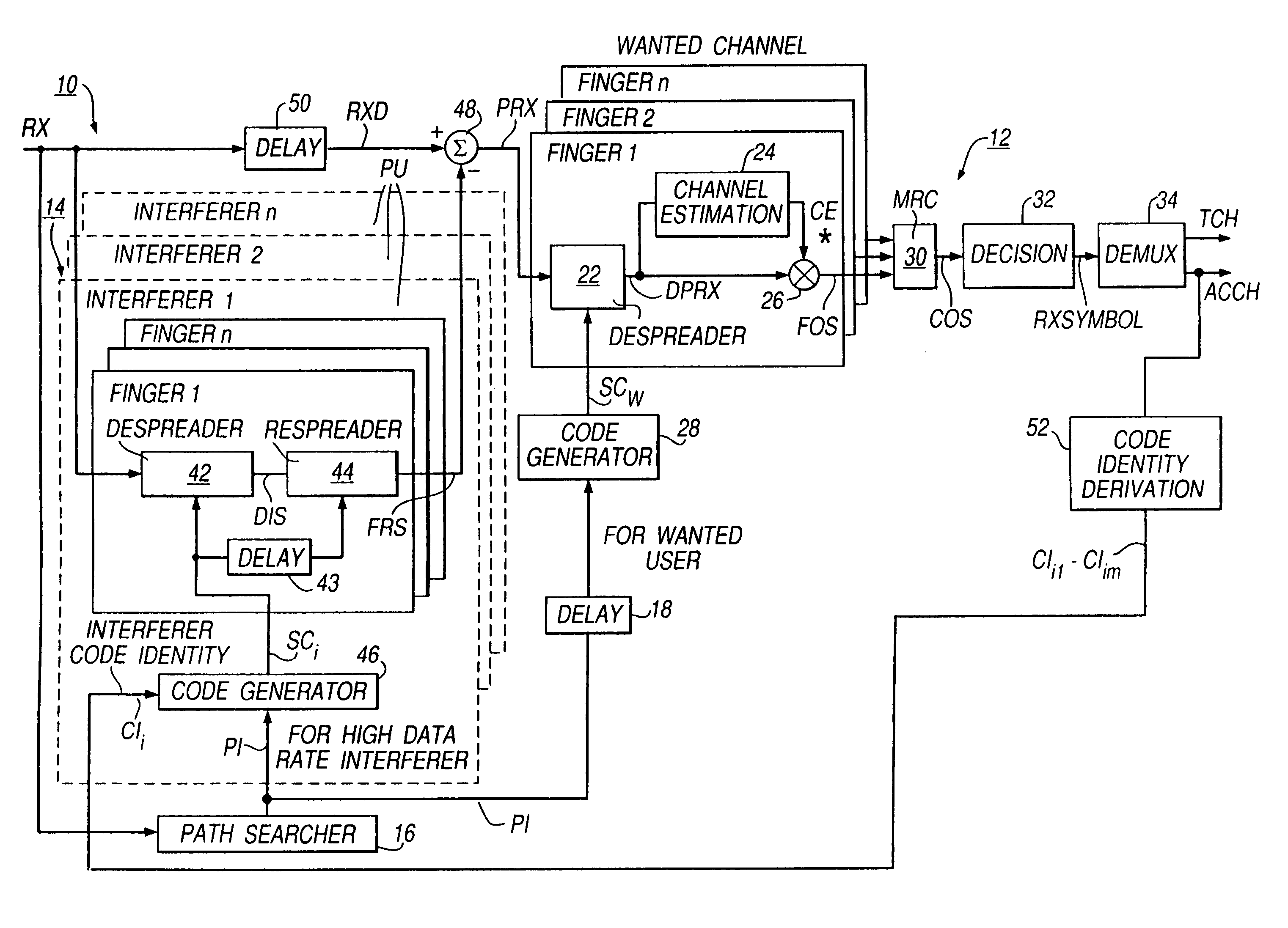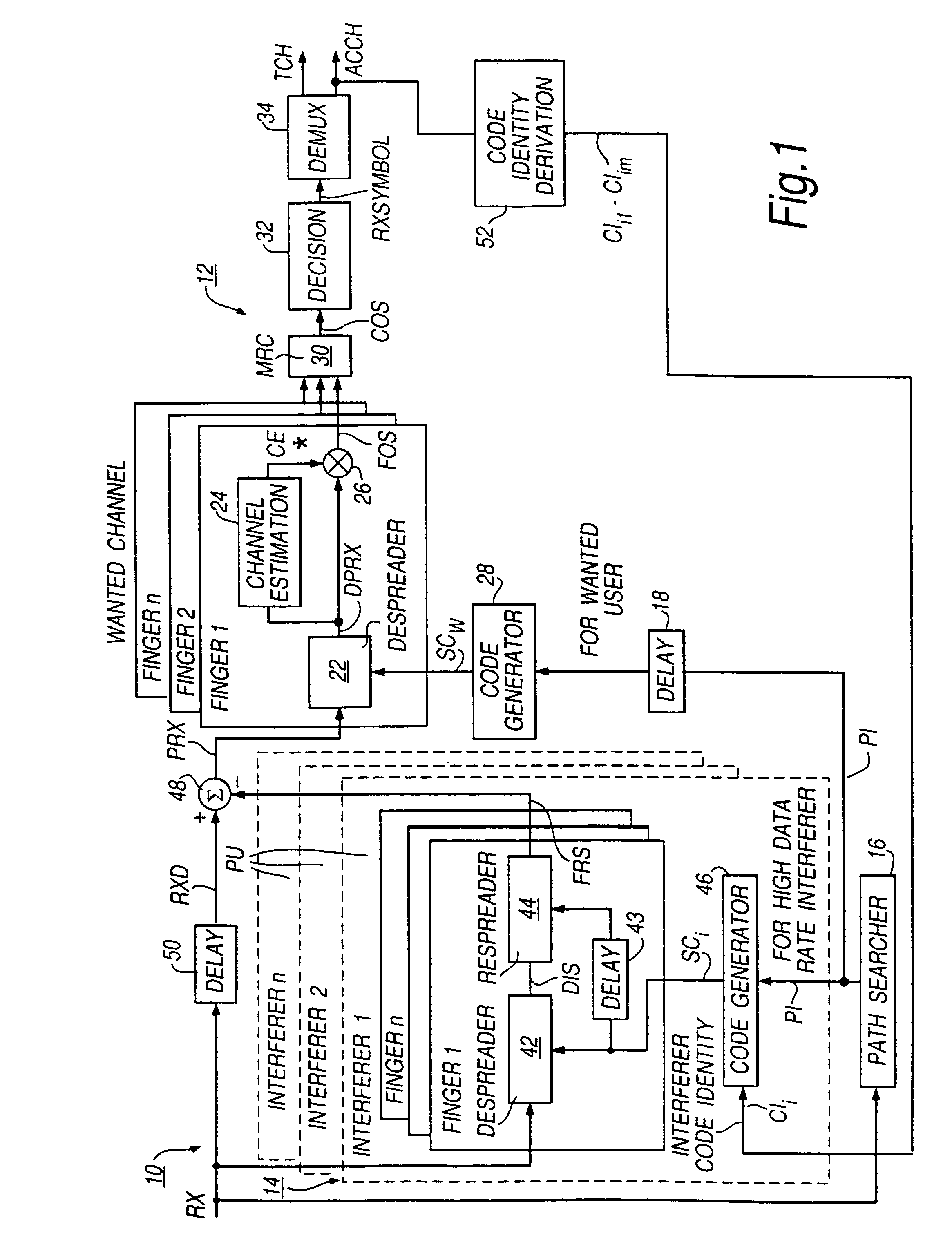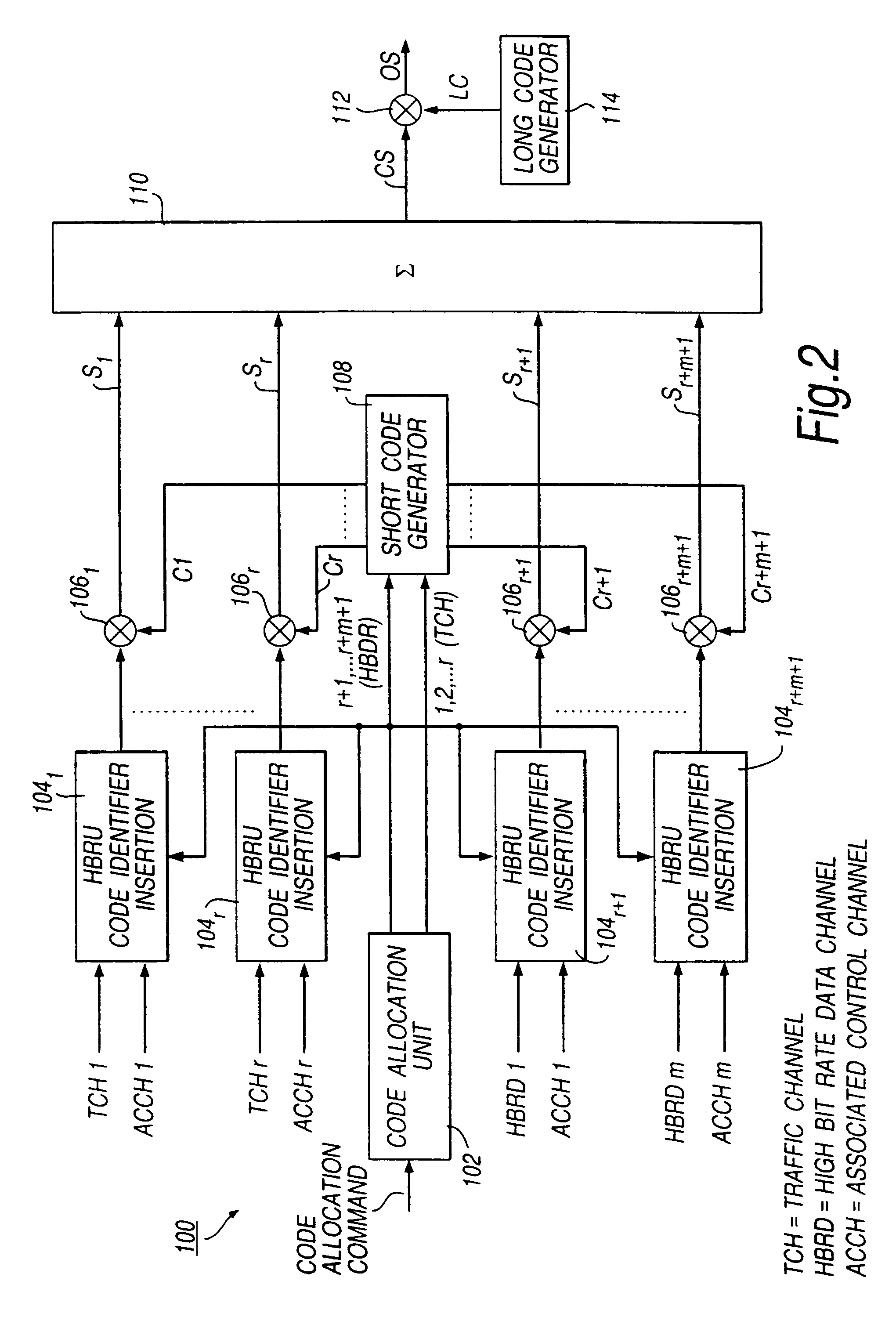Interference reduction in mobile stations for CDMA mobile communications networks
a mobile communication network and interference reduction technology, applied in the field of cdma mobile communications networks, can solve the problems of reducing the bit error rate (ber) performance of the radio link, exacerbated performance degradation, and reducing the network capacity, so as to reduce the interference effect of that interfering signal, reduce the interference effect, and reduce the interference effect
- Summary
- Abstract
- Description
- Claims
- Application Information
AI Technical Summary
Benefits of technology
Problems solved by technology
Method used
Image
Examples
Embodiment Construction
[0020]As is well known, in a direct-spreading (DS) CDMA communications network, each channel between a transmitter and a receiver is assigned a predetermined pseudo-random binary sequence (or code) that modulates the carrier of the transmission signal, spreading the spectrum of the transmission-signal waveform. A large number of CDMA signals can share the same frequency spectrum. At the receiver, the CDMA transmission signals are separated by using a correlator which ideally accepts only signal energy of the channel (the “wanted channel”) embodying the assigned binary sequence or code and despreads its spectrum. The CDMA transmission signals of other users (the “unwanted channels”), whose codes do not match, are not despread in bandwidth and, as a result, contribute only to the noise and represent a self-interference generated by the network. This self-interference is exacerbated by multipath propagation which increases the cross-correlation between the spreading codes of different ...
PUM
 Login to View More
Login to View More Abstract
Description
Claims
Application Information
 Login to View More
Login to View More - R&D
- Intellectual Property
- Life Sciences
- Materials
- Tech Scout
- Unparalleled Data Quality
- Higher Quality Content
- 60% Fewer Hallucinations
Browse by: Latest US Patents, China's latest patents, Technical Efficacy Thesaurus, Application Domain, Technology Topic, Popular Technical Reports.
© 2025 PatSnap. All rights reserved.Legal|Privacy policy|Modern Slavery Act Transparency Statement|Sitemap|About US| Contact US: help@patsnap.com



